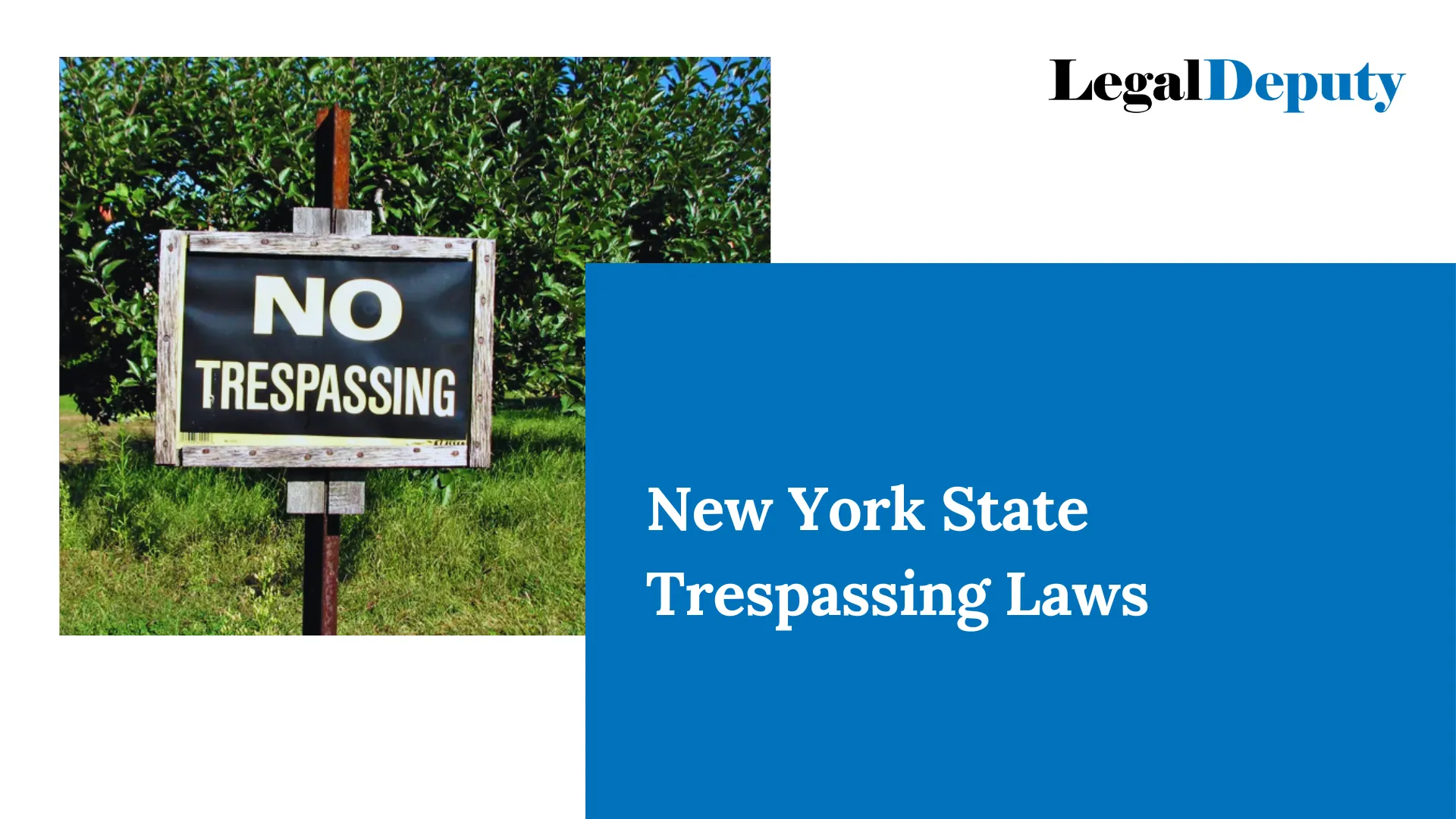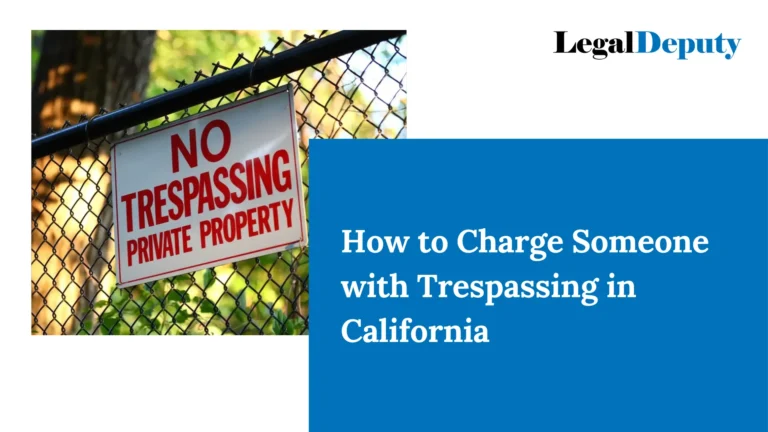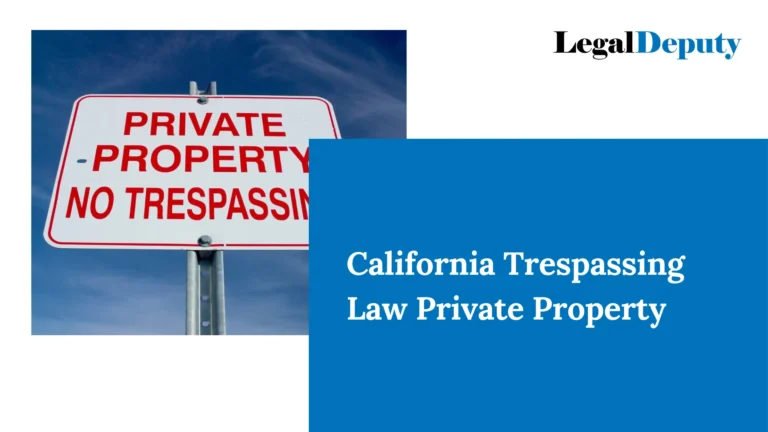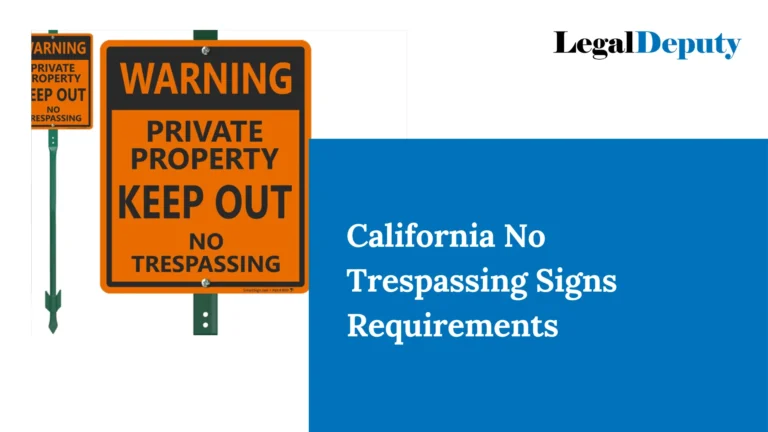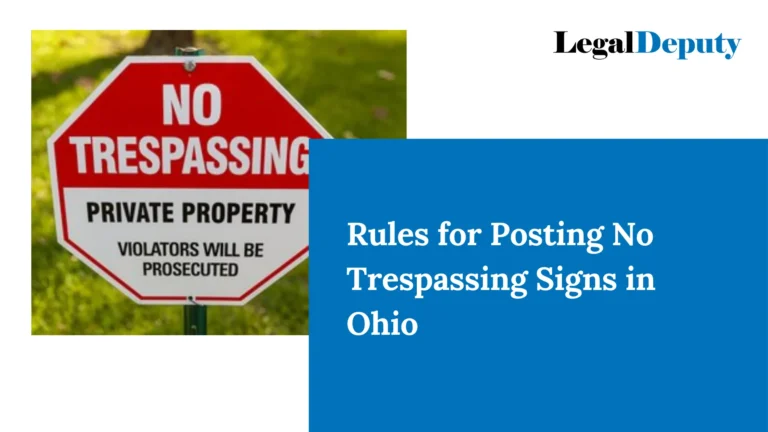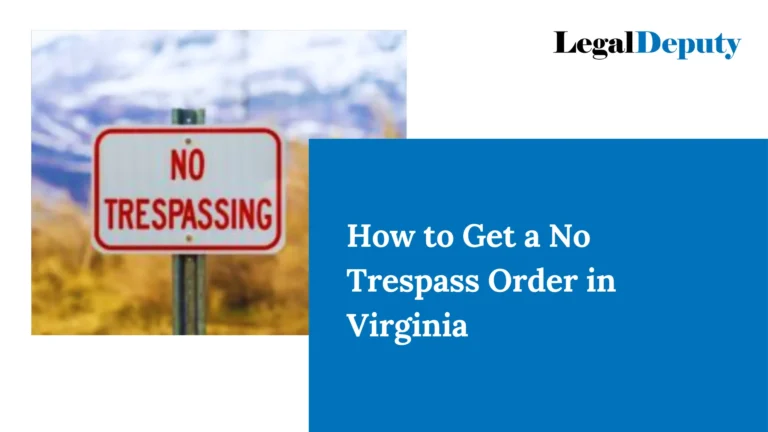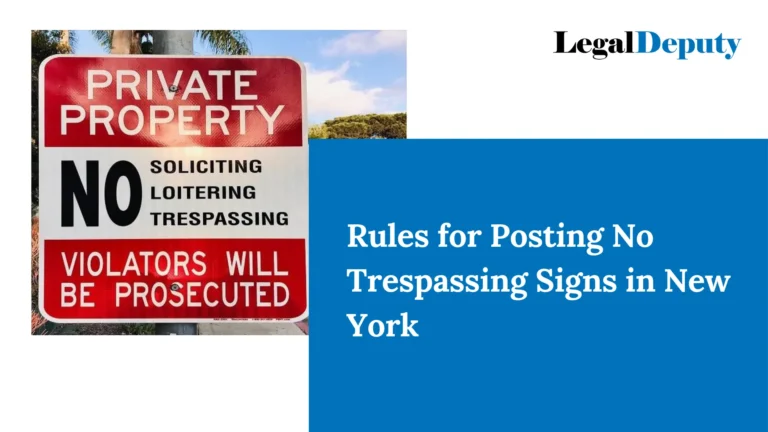New York State Trespassing Laws
Embarking on a journey through the intricate tapestry of New York State trespassing laws can be akin to exploring uncharted territory. In a world where property lines blur, and the concept of personal space becomes increasingly nuanced, understanding the legal intricacies becomes paramount. Whether you’re a concerned property owner, a cautious wanderer, or someone seeking justice, this guide is your compass through the labyrinth of New York’s trespassing regulations.
Join us as we shed light on the legal landscape, unravel the degrees of trespass, and underscore the importance of knowing your rights and responsibilities. Let’s navigate this terrain together, where the law meets the everyday, and where knowledge becomes the key to safeguarding personal space and fostering a harmonious coexistence.
Definition of Trespassing in New York: Decoding the Legal Tapestry
In the heartbeat of the Big Apple or the quiet corners of upstate, the term “trespassing” echoes through the halls of legality, carrying weighty consequences. But what exactly constitutes trespassing in New York State? At its core, trespassing refers to the unauthorized entry onto another person’s property. However, the legal tapestry unveils intricacies that go beyond mere physical presence. Criminal trespass, civil trespass—these are the threads that weave the fabric of New York’s legal definition.
Criminal Trespass:
New York categorizes criminal trespass into degrees, each carrying its own set of consequences. From the misdemeanor of the third degree to the felony of the first degree, the severity escalates based on the circumstances. Picture it as a spectrum, with actions ranging from simple unauthorized entry to instances involving weapons or intent to cause harm.
Civil Trespass:
Distinguishing itself from criminal trespass, civil trespass ventures into the realm of property rights and damages. It’s not just about stepping onto someone else’s land—it’s about the impact, the interference, the consequences. As we navigate this legal terrain, keep in mind that understanding these distinctions is not just a matter of legality; it’s a pathway to maintaining harmony in the spaces we share.
In this section, we unravel the legal definitions that often remain hidden in the shadows, shedding light on what it means to cross boundaries in the eyes of New York State law. Join us as we navigate the spectrum of trespassing, making sense of the legal jargon and humanizing the impact these laws have on our daily lives.
Criminal Trespassing Laws in New York: Degrees of Intrusion
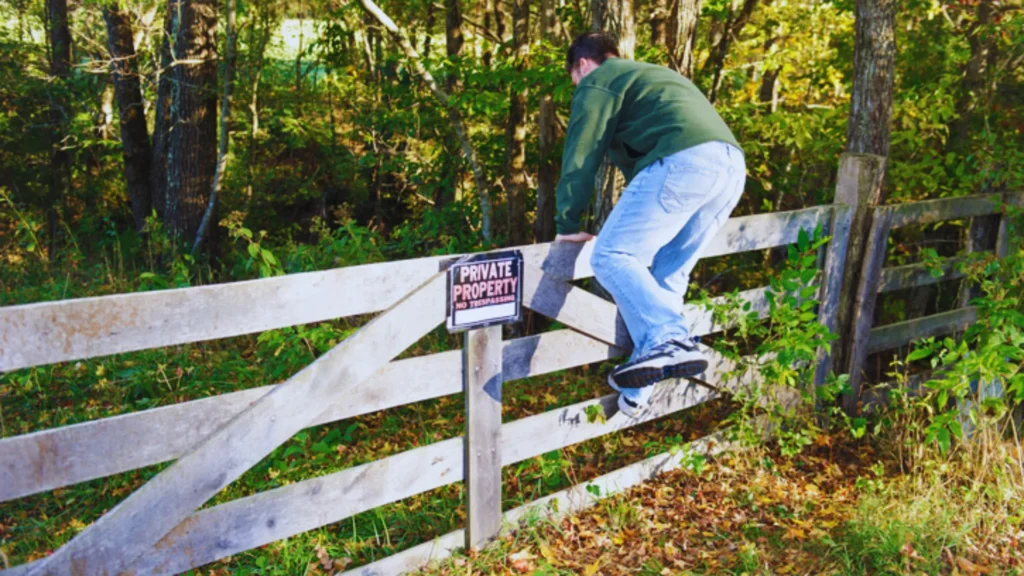
In the city that never sleeps, trespassing laws awaken a legal landscape that demands our attention. Criminal trespassing, a term echoing through the statutes of New York, unfolds in degrees, each degree painting a different shade on the canvas of legality.
Degrees Unveiled:
Third Degree – A Trespasser’s Prelude:
Imagine a scenario where one crosses a property line, unaware of the boundaries. This is the misdemeanor of the third degree—an unintentional foray into forbidden territory. The repercussions may not be severe, but they serve as a cautionary tale of the importance of awareness.
Second Degree – Crossing the Threshold:
The stakes rise as we ascend to the second degree. Here, the intrusion involves additional elements, perhaps a warning ignored or an area designated as off-limits. Intent becomes a key player, elevating the act from inadvertent to deliberate.
First Degree – Trespassing with Intent:
At the peak of the spectrum lies the felony of the first degree. This is not a mere accidental step into someone else’s space; it’s a deliberate act, often accompanied by intent to cause harm or possessing a dangerous instrument. The consequences are weighty, reflective of the gravity of the intrusion.
Consequences Laid Bare:
Understanding these degrees is not merely a journey through legal jargon; it’s a navigation of real-world scenarios. In the bustling streets of New York or the serene landscapes of the state, criminal trespassing laws shape the boundaries that preserve personal sanctuaries. As we explore the degrees of intrusion, let’s humanize the legal nuances, recognizing that behind every law is a story—a story of trespass, intent, and the delicate balance between personal freedom and societal order. Join us as we decipher the legal choreography that defines the degrees of criminal trespass in New York State, where every step carries its own weight in the dance of legality.
Civil Trespassing Laws: Beyond Boundaries, Into Accountability
In the quiet spaces between properties, where property lines blur, and rights intertwine, civil trespassing laws come to the forefront in New York. It’s not just about physical presence; it’s about the impact, the interference, and the consequences that echo through the legal corridors.
Distinction from Criminal Trespass:
Civil trespassing takes us into the realm of property rights and damages, a world where the consequences are measured not just in legal degrees but in tangible effects on individuals and their spaces. It’s the neighbor’s tree limb encroaching on your backyard, or the construction noise disrupting the tranquility of your home—a trespass not just on land but on the peace and enjoyment of your property.
Remedies and Recourse:
When civil trespass occurs, it’s not just about punishment; it’s about restitution. Victims have the right to seek remedies for the damages inflicted upon them. From injunctions to monetary compensation, the law provides avenues for restoring the balance disrupted by the unauthorized entry.
Considerations for Pursuing a Case:
As we navigate the landscape of civil trespassing laws, it’s crucial to humanize the legalities. These are not just abstract principles; they are tools that individuals can use to protect their sanctuaries. Understanding when and how to pursue a civil trespass case requires a delicate balance of legal knowledge and empathy for the impact on personal spaces.
Join us as we venture into the world where the boundaries between properties hold immense significance. Civil trespassing laws in New York are not just about lines on a survey map; they are about the stories of individuals seeking recourse for the intrusion into their personal havens. Let’s explore the depth of civil trespassing laws, where legality meets the human experience, and where accountability intertwines with the concept of shared spaces.
Property Owner Rights: Guardians of Personal Spaces in New York
In the intricate dance between property lines and shared spaces, the rights of property owners emerge as the guardians of personal sanctuaries in New York. Understanding these rights isn’t just about legal prowess; it’s about empowering individuals to safeguard the spaces they call their own.
The Right to Protect Property:
Property owners have the inherent right to protect their land from unauthorized entry. Whether it’s a residence, a business establishment, or vacant land, the law recognizes the importance of preserving the integrity and security of these spaces.
Legal Measures for Protection:
The arsenal available to property owners extends beyond physical boundaries. From erecting fences to posting clear signage, the law acknowledges the proactive measures owners can take to deter potential trespassers. Knowing the legal avenues empowers property owners to take preventive actions, creating a deterrent effect.
Balancing Rights and Responsibilities:
While property owners hold the right to protect their spaces, the law also emphasizes a delicate balance. Understanding the limits of these rights prevents overreach and ensures a harmonious coexistence within communities. It’s not just about boundaries; it’s about fostering a sense of shared responsibility for communal living.
Legal Implications of Vigilance:
In the bustling urban landscapes and serene rural retreats of New York, property owners play a vital role in shaping the narrative of personal and communal spaces. Vigilance isn’t just a personal choice; it carries legal implications that ripple through neighborhoods. Join us as we explore the rights of property owners, where legality intertwines with the responsibility of being stewards of personal spaces. Let’s navigate the legal avenues that empower property owners to protect their havens, ensuring a delicate balance between rights and communal harmony.
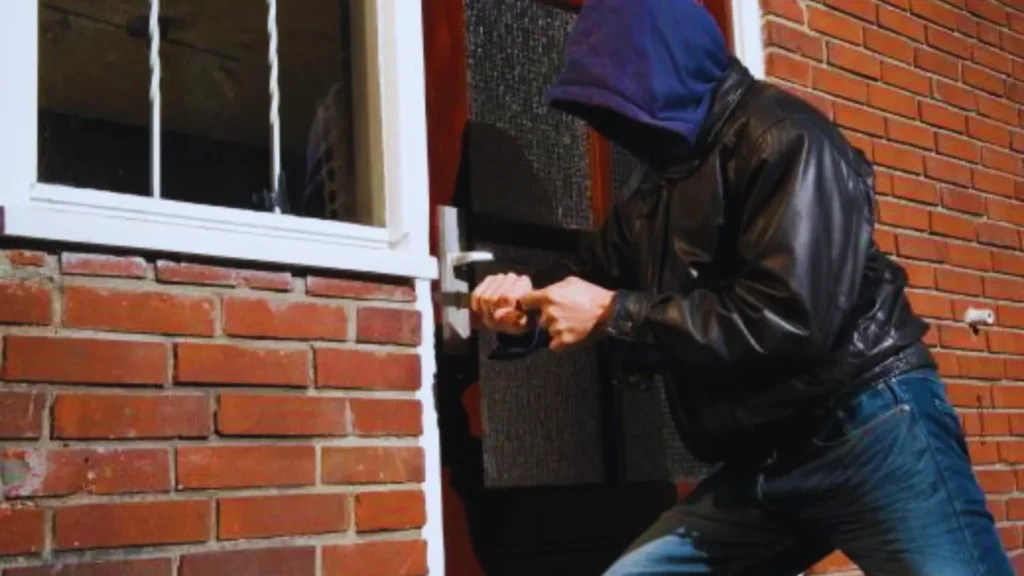
Defences Against Trespassing Charges: Navigating the Legal Maze with Integrity
In the labyrinth of New York State trespassing laws, the accused often find themselves seeking refuge in the realm of defences—a space where legal nuances intersect with the stories of individuals. As we unravel the possibilities of defence against trespassing charges, it’s essential to humanize the legal proceedings, recognizing that behind every case is a person with a unique perspective.
Innocent Entry:
One of the most common defences against trespassing charges is demonstrating innocent entry. Picture a scenario where someone inadvertently crosses a property line, unaware of the boundaries. In these instances, proving lack of intent becomes a crucial aspect of the defence, reminding us that honest mistakes shouldn’t always bear legal consequences.
Consent and Invitation:
The concept of consent becomes a powerful defence. If the accused had permission or an invitation to enter the premises, it serves as a shield against trespassing allegations. This defence emphasizes the importance of communication and clear boundaries in shared spaces.
Property Maintenance Activities:
Sometimes, individuals may find themselves on another’s property due to necessary activities, such as maintenance or repairs. Highlighting the legitimate purpose behind the entry becomes a cornerstone of defence, emphasizing the constructive intent behind the actions.
Challenging Intent:
In cases where intent plays a pivotal role, challenging the prosecution’s ability to prove criminal intent becomes a strategic defence. This underscores the significance of intent as a key element of many trespassing charges.
As we navigate the defences against trespassing charges, it’s crucial to humanize the legal proceedings. Behind each defence strategy is a person with a unique circumstance, offering a reminder that legal matters aren’t detached from the human experience.
No Trespassing Signs and Warnings: Communicating Boundaries in New York
In the quiet language of property rights, No Trespassing signs emerge as the unsung heroes, communicating boundaries in a world where shared spaces intersect with individual sanctuaries. Beyond the legal implications, these signs carry the weight of unspoken agreements and the shared responsibility of creating a harmonious coexistence.
Legal Significance:
No Trespassing signs serve as a crucial element in the legal arsenal of property owners. They act as a clear communication of boundaries, setting the stage for legal recourse if those boundaries are breached. Understanding the legal significance of these signs empowers property owners to assert their rights and protect their spaces.
Warning Against Unintentional Trespass:
These signs are not just about deterring intentional trespassers; they also serve as beacons for those unaware of property lines. A well-placed sign becomes a courteous warning, preventing inadvertent trespass and fostering a culture of respect for personal spaces.
Humanizing Boundaries:
Beyond the legalities, No Trespassing signs humanize the concept of boundaries. They represent an agreement, a mutual understanding among community members to respect each other’s spaces. In the bustling cityscapes and serene countryside of New York, these signs become a subtle reminder that every inch of land carries a story and deserves acknowledgment.
Shared Responsibility:
The presence of No Trespassing signs goes beyond individual property lines; it signifies a shared responsibility for creating a community where personal spaces are respected. In a world where shared spaces are the norm, these signs become symbols of mutual understanding and a call to uphold the delicate balance between personal freedom and communal harmony.
Recent Updates and Changes in the Law: Navigating the Shifting Legal Terrain
In the dynamic realm of New York State trespassing laws, change is the only constant. Recent updates and amendments weave a tapestry of evolving regulations that demand our attention. As we navigate this shifting legal terrain, it’s crucial to humanize the updates, recognizing that behind every change is an impact on individuals and communities.
Legislative Adjustments:
The legal framework surrounding trespassing in New York undergoes periodic adjustments. Legislative amendments may redefine elements such as degrees of criminal trespass, penalties, or considerations in civil trespass cases. Staying informed about these changes is not just a legal necessity; it’s a proactive step towards understanding the ever-shifting boundaries of the law.
Impact on Individuals and Communities:
Beyond the technicalities of legal amendments, it’s essential to humanize the impact. How do these changes affect property owners seeking to protect their spaces? What does it mean for individuals accused of trespassing? Understanding the real-world consequences ensures a holistic perspective on the legal landscape.
Adapting Legal Strategies:
For legal professionals and individuals alike, adapting to recent updates requires a strategic approach. Whether it involves adjusting defence strategies, updating preventive measures for property owners, or understanding the implications of recent court rulings, staying ahead of the curve is key.
Community Awareness:
In the diverse neighborhoods of New York, community awareness plays a pivotal role. Recent updates should not be confined to legal circles; they should resonate within communities. This awareness fosters a sense of shared responsibility, empowering individuals to navigate the legal terrain with knowledge and understanding.
Tips for Avoiding Trespassing Issues: Navigating Shared Spaces with Respect
In the intricate dance of shared spaces and personal boundaries, avoiding trespassing issues is not just a legal prerogative—it’s a testament to the shared responsibility of creating a community where respect thrives. Let’s explore actionable tips that not only safeguard against legal entanglements but also foster a culture of understanding in the diverse landscapes of New York.
1. Know the Boundaries:
Familiarize yourself with property lines and respect the spaces marked by No Trespassing signs.
Be aware of public and private spaces, recognizing the importance of permissions in different settings.
2. Communication is Key:
Establish clear communication with neighbors about property boundaries and shared spaces.
If you have concerns about potential trespassers, address them openly and seek resolutions amicably.
3. Educate and Inform:
Spread awareness within your community about the importance of respecting property boundaries.
Educate others on the legal consequences of trespassing, emphasizing the significance of shared responsibility.
4. Secure Your Property:
Utilize physical deterrents such as fencing and strategically placed lighting to discourage trespassers.
Clearly post No Trespassing signs to communicate boundaries effectively.
5. Legal Consultation:
If you’re a property owner, consult with legal professionals to understand your rights and the legal measures available to protect your space.
Seek legal advice if you find yourself accused of trespassing to ensure a proper understanding of your rights and potential defences.
6. Stay Informed on Legal Updates:
Regularly check for updates and changes in trespassing laws in New York.
Stay informed about recent court rulings and legislative amendments to adapt your strategies accordingly.
7. Document and Record:
Keep records of any incidents related to trespassing, including dates, times, and details.
Documentation can be crucial in case legal issues arise, providing evidence and context.
Navigating shared spaces requires a delicate balance between legal awareness and community cooperation. Let’s not just avoid trespassing issues; let’s foster a culture where shared spaces are respected, and individuals navigate their surroundings with empathy and understanding. Together, let’s contribute to creating neighborhoods in New York where the lines on the map are not just legal boundaries but markers of a collective commitment to harmonious coexistence.
Conclusion
In the intricate tapestry of New York State trespassing laws, the threads of legality intersect with the stories of individuals and the pulse of shared spaces. As we conclude this exploration, remember that beyond legalities lie narratives—stories of property owners safeguarding havens, individuals navigating boundaries, and communities nurturing a culture of respect. Embrace the knowledge gained, for it is not just a shield against legal entanglements but a compass guiding us toward a harmonious coexistence.
Let’s tread lightly, honoring the delicate balance between rights and responsibilities, and contribute to a New York where personal spaces are cherished, shared, and safeguarded in the spirit of community. In this evolving landscape, let understanding be our compass, respect our guide, and empathy our shared language.
Disclaimer
The information provided on this blog is intended for general informational purposes only and should not be construed as legal advice. While we strive to keep the content accurate and up-to-date, laws and regulations vary, and the application of legal principles can differ based on individual circumstances.
Readers are advised to consult with qualified legal professionals to obtain advice tailored to their specific situations. The blog authors and contributors are not responsible for any actions taken based on the information presented, and reliance on the content is at the reader’s discretion.
Engaging with this blog does not establish an attorney-client relationship, and confidential or sensitive information should not be shared through comments or emails. We encourage users to verify information independently and seek legal counsel for comprehensive guidance on their legal concerns.

